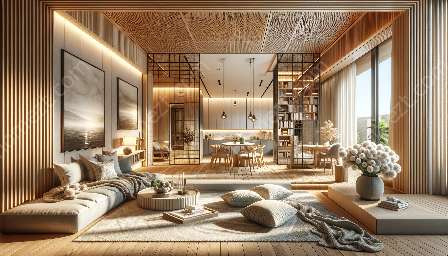Living in a calm and peaceful home is essential for our well-being, yet the presence of noise can significantly affect our psychological and physiological health. In this topic cluster, we'll explore the psychological and physiological impacts of noise in homes, focusing on the interplay between acoustics, sound transmission in buildings, and noise control.
Understanding Noise in Homes
Noise in homes can come from various sources, including traffic, neighbors, appliances, and HVAC systems. While some level of background noise is inevitable, excessive or unpredictable noise can lead to a range of health issues.
Psychological Impacts
Psychologically, living in a noisy environment can lead to stress, anxiety, irritability, and decreased cognitive performance. Persistent noise can disrupt sleep patterns, leading to fatigue and an increased risk of developing mental health conditions such as depression and anxiety disorders. Additionally, noise can interfere with communication and social interaction, impacting overall quality of life.
Physiological Impacts
Physiologically, exposure to high levels of noise can result in increased blood pressure, heart rate, and stress hormone levels. Prolonged exposure to loud noise has been linked to cardiovascular problems, compromised immune function, and even an increased risk of stroke. Children and elderly individuals are particularly susceptible to the physiological impacts of noise, with potential effects on their development and overall health.
Acoustics and Sound Transmission in Buildings
Understanding the principles of acoustics and sound transmission in buildings is crucial for mitigating the impacts of noise. Acoustics deals with the generation, propagation, and reception of sound, while sound transmission focuses on how sound travels through building elements such as walls, floors, and ceilings.
Building Design and Materials
Proper building design and the use of sound-absorbing materials can help reduce the transmission of noise within homes. Effective insulation, double-glazed windows, and soundproofing strategies can significantly improve the acoustic environment, creating a quieter and more comfortable living space.
Occupant Behavior
Occupant behavior also plays a role in sound transmission within homes. Simple actions such as closing doors and windows, using rugs or carpets to dampen noise, and ensuring proper maintenance of appliances can contribute to a quieter indoor environment.
Noise Control in Homes
Implementing effective noise control measures is essential for creating a peaceful living environment. Noise control strategies encompass a range of techniques aimed at reducing the impact of noise on occupants.
Soundproofing
Soundproofing involves the use of specialized materials and construction techniques to minimize the transmission of noise between different areas of a home. This may include the installation of sound barriers, resilient channels, and acoustic panels to absorb sound and prevent it from traveling through walls and floors.
Behavioral Changes
Encouraging behavioral changes, such as setting quiet hours, using headphones, and maintaining quiet household activities, can contribute to a quieter and more harmonious living environment for all occupants.
Technological Solutions
Advancements in technology have led to the development of noise-reducing products and systems, such as quiet appliances, sound-reducing windows, and noise-cancelling devices, offering homeowners options to proactively address noise issues.
Conclusion
In conclusion, understanding the psychological and physiological impacts of noise in homes is vital for creating living spaces that promote well-being and comfort. By incorporating principles of acoustics, sound transmission in buildings, and effective noise control strategies, homeowners can mitigate the negative effects of noise, fostering environments that support health and happiness.


























